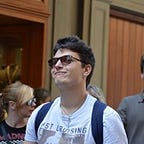Why do 3d printers need math?
Additive Manufacturing is the process most commonly known as 3d printing but the first term is more accurate.
The idea that from a Digital 3d designed data it’s possible to create a real model by depositing material in layers changed completely the way to prototype and produce industrial objects. The precision achievable in little objects with this technique is almost impossible to achieve with subtracting manufacturing or molding.
3 Examples of additive manufacturing
There are many different types of additive manufacturing, the three best known and most used are SLA, FDM and MJM:
SLA: Laser technology that apply layer-upon-layer photopolymer resin (polymer that changes properties when exposed to light).
FDM: Thermoplastic materials(polymer that changes to a liquid upon the application of heat and solidifies to a solid when cooled) injected through indexing nozzles onto a platform.
MJM:Multi-Jet Modeling is similar to an inkjet printer in that a head, capable of shuttling back and forth (3 dimensions: x, y, z) incorporates hundreds of small jets to apply a layer of thermopolymer material, layer-by-layer
A lot of structure which were very difficult to create now are possible in a fraction of the time and the most suitable geometric shape for solving a problem can be found.
How can we do this?
The answer is simple, but sophisticated. We only need the mathematical concept of topology optimization.
Topology optimization
Topology optimization, an industry term that Wikipedia defines as “A mathematical approach that optimizes material layout within a given design space with the goal of maximising the performance of the system” , is a non parametric optimization technique that identifies and removes areas of a design space not contributing to the stiffness of a part or to the force flow in it.
This method determines an optimum material distribution in a defined design area while accounting for existing constraints (i.e. boundary conditions ,fixations ,tensions etc..)
Using this technique is possible to create structures that look more organic with holes and openings and, generally, of much higher complexity. The result topology will have external dimensions identical to normal elements but interior shape which is very different from the traditionally manufactured ones. Instead of triangles and circles we have a more bone-like structure.
The very big advantage of parts made with topology optimization is that the same strength characteristic can be created with less materials which is much cheaper for industry.
The computing power and mathematical tools to run a topology optimization were available already in 1990 but the real big problem in that years was producing the parts designed in this way. This is where additive manufacturing comes in.
Additive manufacturing, a process in which “complexity is free” makes producing highly complex shapes as easy as printing straight lines. Additive manufacturing in this case is what really fills the gap from theoretical knowledge and application making what in 90’s was only a “dream” a reality.
Famous softwares for this are Tosca Structure, a robust general purpose tool for non linear topology optimization, and Ansys.
The powerful tool of additive manufacturing together with this mathematical design knowledge can really be the future of industry , but there are also some problems.
Problems of additive manufacturing
The most relevant problems arises from the manufacturing part, not from the mathematical optimization of the process.
SLOW BUILD RATES: The “printing” process is slower compared to other productive process in fact the majority of printer lay down materials at a speed of one to five cubic inches per hour.
DISCONTINUOUS PRODUCTION PROCESS: Parts can only be printed one at a time, preventing economics of scale.
SUPPORT STRUCTURES: Most processes require support structures either to prop the layers, anchor the part or provide heat conduction paths during the printing process. These supports add to the cost of material
LIMITED COMPONENT SIZE/SMALL BUILD VOLUMES: In most cases, polymer products are about 1 cubic yard in size, while metal parts may only be one cubic foot
Additive manufacturing driven by topology optimization is a productive technique which permits something that has never been seen before. The possibility to create very complex geometry adapted to the real problem comes with a cost.
It is very likely that additive manufactured parts will co-exist in an assembly with traditionally manufactured parts. Softwares (such as Ansys and Tosca) already allow the freezing of areas which will be treated with traditional techniques and removed from the design space.
Topology optimization combined with this manufacturing technique will drastically change the way to produce objects in industry.
